How to get out of bed gracefully.
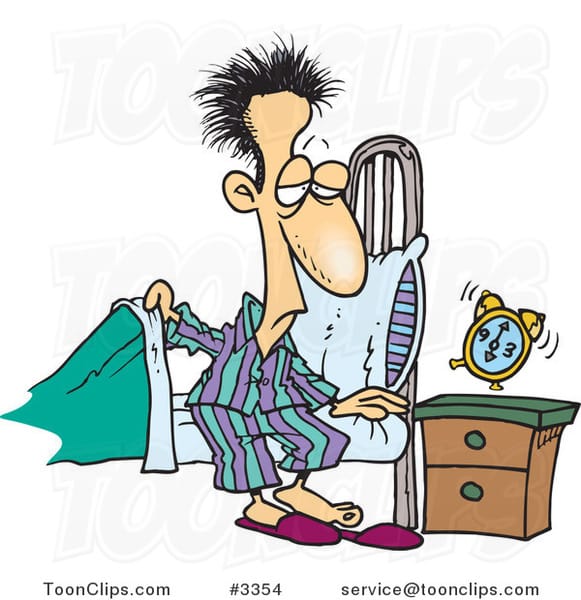
Let's face it: aging sucks. Growing older is often a delicate dance between you, Father Time and Mother Nature. And it rarely resembles "Swan Lake."
Exhibit A is one of the most prosaic activities known to humankind: getting out of bed in the morning. Muscles you never even knew existed are suddenly staging a protest, and cajoling other muscle groups to join them in the picket line.
There are ways to mitigate this misery. Not completely, of course. Sometimes a body is aching because that's what older-model humans tend to do. But I've found that there are a few movements that really help keep the greatest aches and pains at bay. I'll highlight three of them here.
But first: my usual disclaimer. I'm not a doctor, and I'm not offering a clinical diagnosis in this article. If you're suffering from serious, long-term pain, please see a qualified professional.
Problem # 1: You're feeling really beat up, creaky, and at least twenty years older than the number on your driver's license.
Possible solution: "The Harris Triples." I've written about this exercise before. It's here: https://beneath-the skin.ghost.io/ghost/#/editor/post/672a5a483118fe0001a6668b
I think this is the single most beneficial "stretchercise" you can do. Bar none. If you add in the "bonus squat," you'll be hard pressed to find a more complete warm-up routine. I do this every morning when I wake up. It works the big stabilizer muscles like the glutes and ab complex (both lengthening and strengthening) as well as the lats, lower back complex, deltoids, and smaller, underutilized muscles like the adductors (groin) and hip flexors.
Here's how to start.
Step One: Get in a standard push-up position. Arms wide, and feet positioned accordingly. Now, bring one foot up to where your arms are (or close) and place the sole of your foot on the ground, with your knee bent. Bring your closest elbow down to the inside of your foot, while keeping the extended leg straight. Hold for a five second count. (Only bring your elbow as far down as discomfort will allow — if you can't go all the way to to the ground, that's fine.) Here's what it looks like:
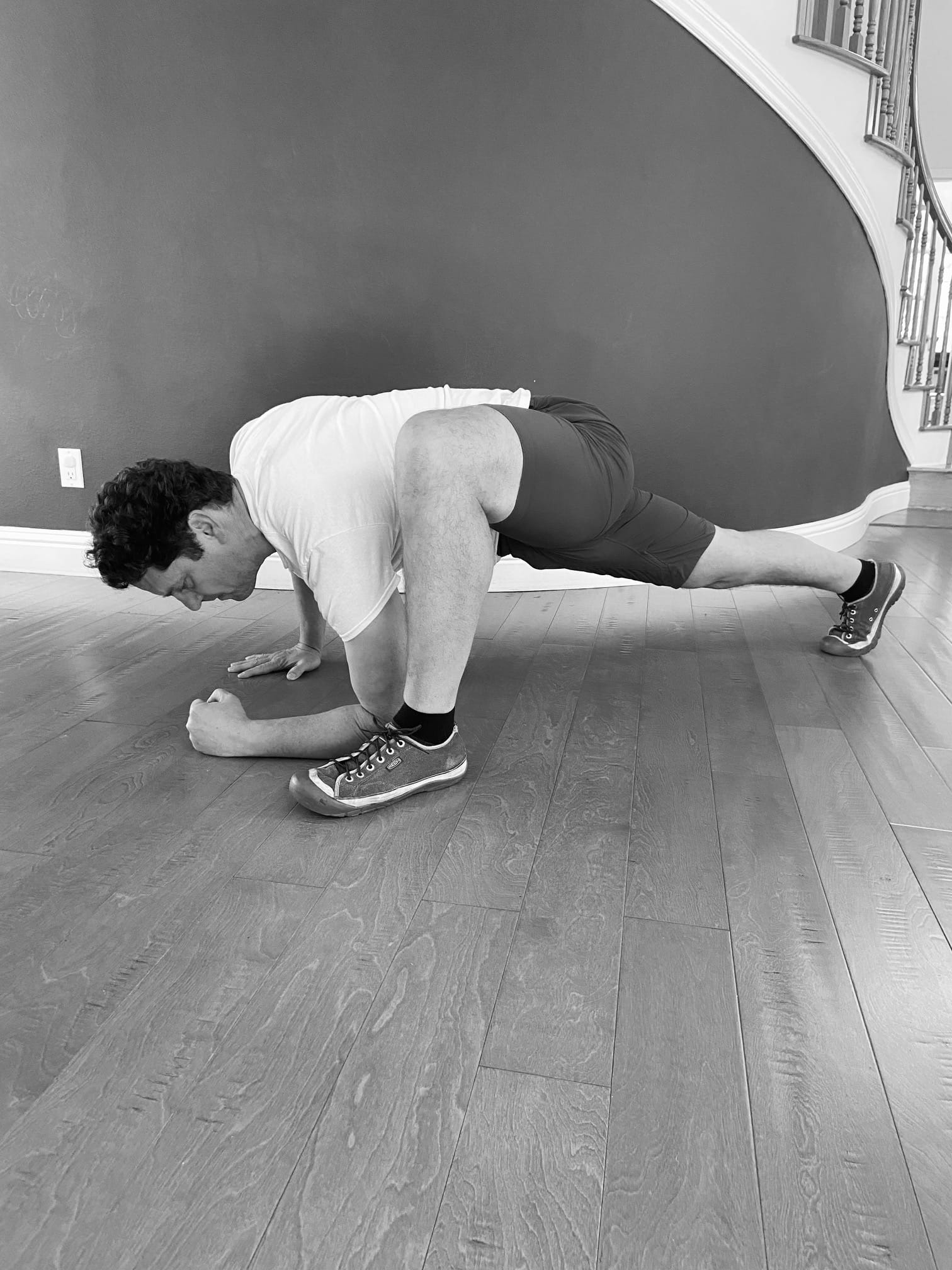
Step Two: Take that same elbow that was down and raise your arm straight up, twisting at the torso. Hold for another five second count. Then, repeat the motion on both sides. Here's what that looks like:

Bonus step: hop up to "squat and hold." Now we're talking! If your muscles groups are picketing in the morning, it's likely your adductors and hip flexors are among the loudest protestors. After you're done with the first two steps, go back in a "neutral" push-up position, and jump up to a squat position. (If you have balky knees, walk up instead) Place both palms flat on the ground with your feet wide and slightly pointed out and hold for a ten count. It looks like this:

Try a set of each of these initially. I do three sets of each (including the squats) with my clients.
Problem number two: You can't bring your knee up to put on your socks or shoes. Your hip flexors might be tight or weak.
Possible solution: The "Jane Fondas." Jane Fonda was seriously underrated as an exercise "influencer." She was really, really good, and some of her movements are highly beneficial. You can wear leg warmers, tights, and a leotard if you need to feel more authentic. Bonus points for playing the ear candy Mickey Avalon song while doing these.
Start off lying on your side with both legs out straight, one on top of the other. Bring the top leg, with your knee bent, into your chest. Then bring it back to a neutral position. Finally, bring that leg up into the air while keeping your knee straight. Only go as high as you can without bending your knee. (Bending it will activate your quads instead of your hip flexors.) Try a set of twenty at first. (Trust me...it burns). I usually do a set of 40 each side with clients. The complete progression looks like this:
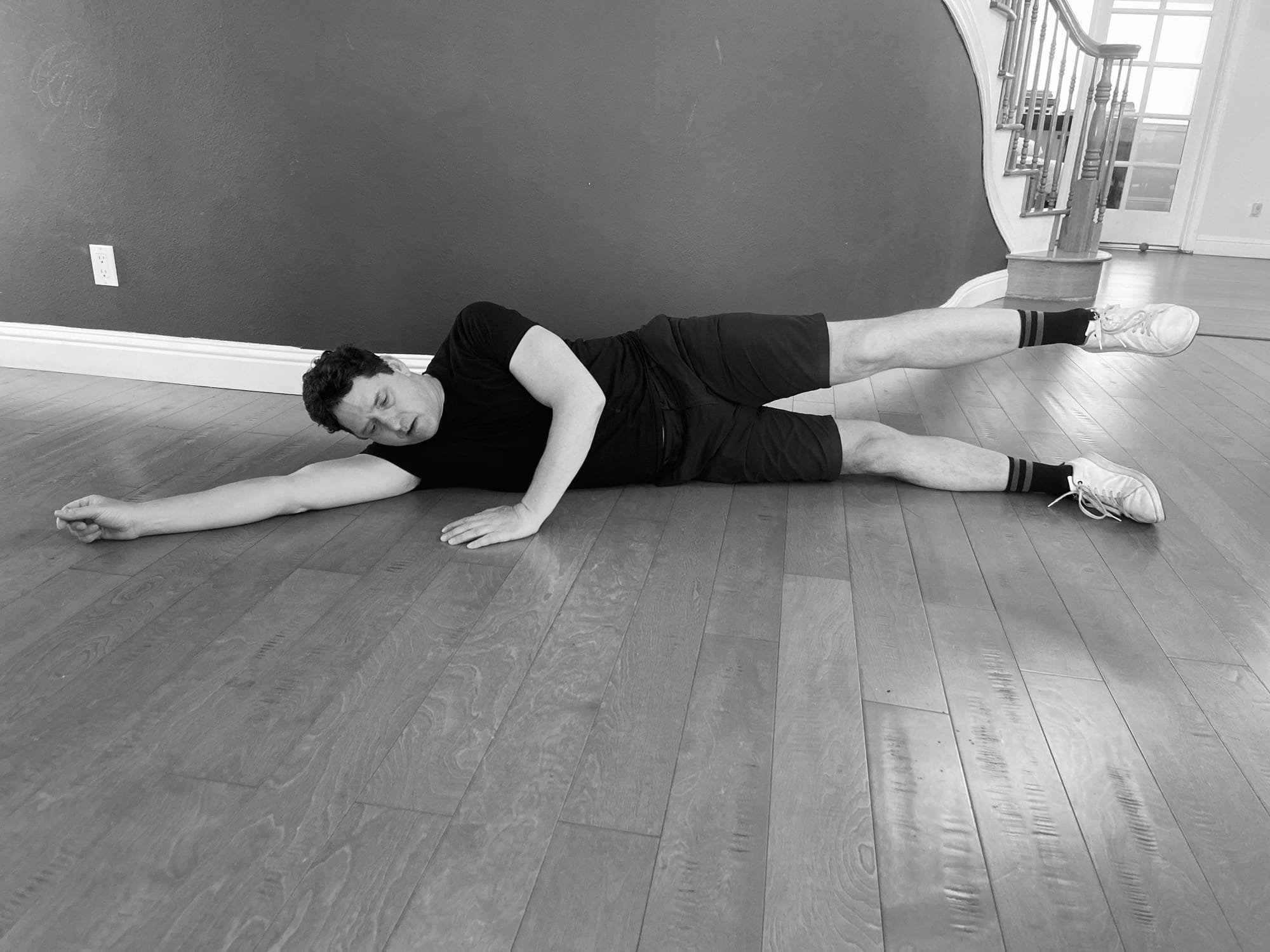
Step One: Neutral
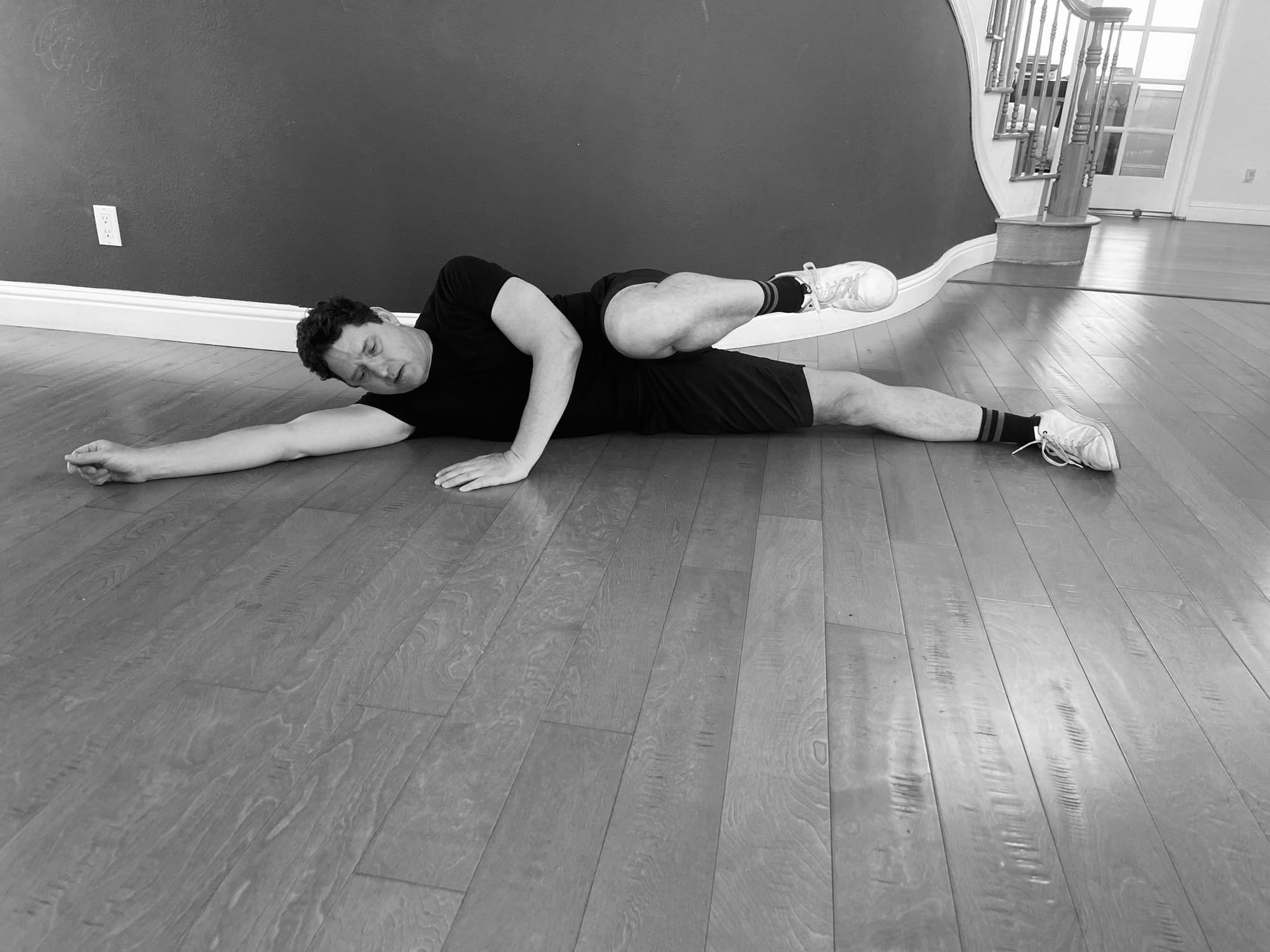
Step Two (and then back to neutral position)
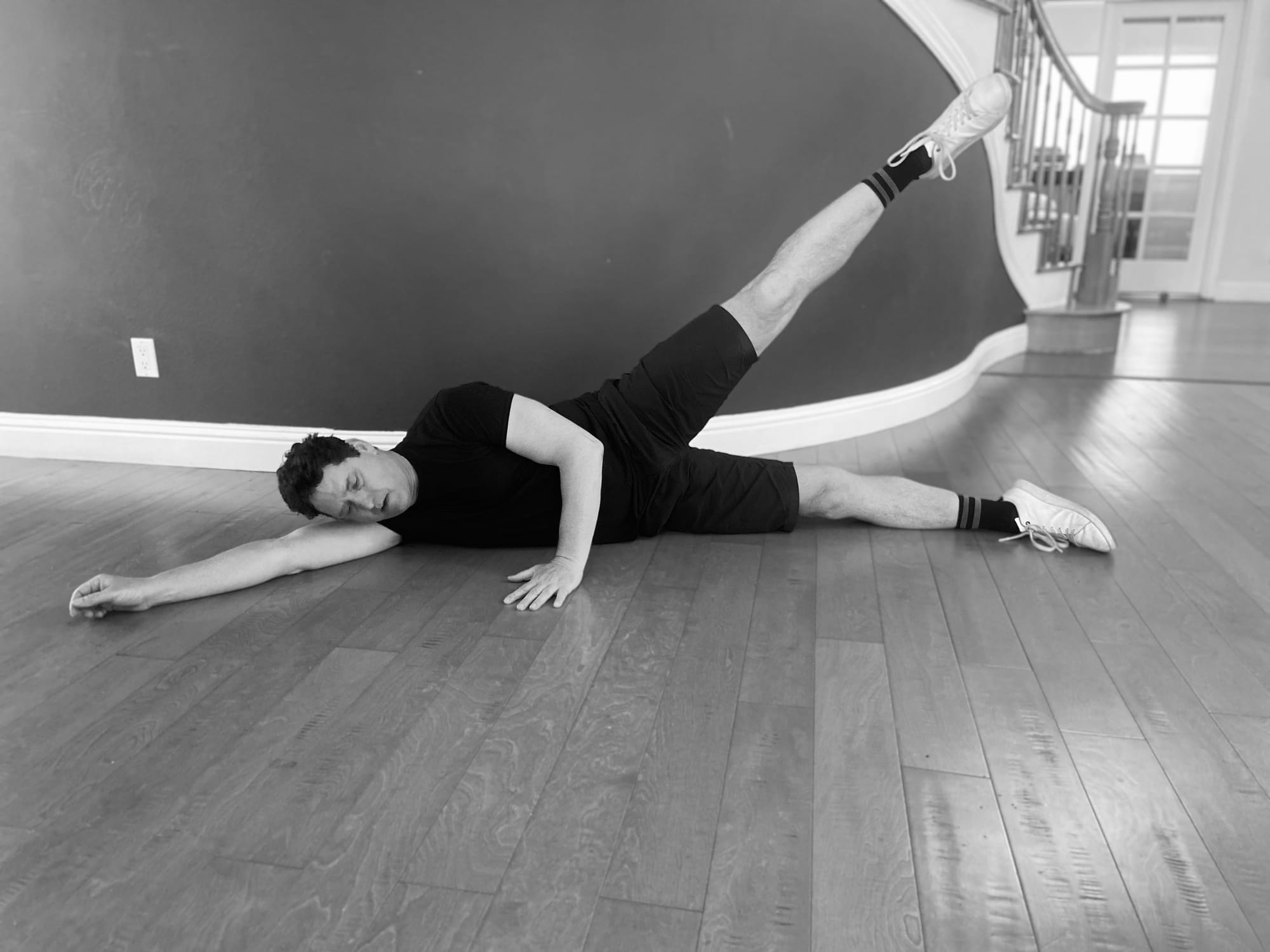
Step Three (and then back to neutral)
Problem Three: when you try to put on your pants in the morning, you end up doing some weird, crazy one-legged dance.
Probable solution: work on your balance. Of all the fitness components (strength, cardio, flexibility, and balance) balance gets the shortest shrift. It's easy to see why — there's no visceral payoff. There's no glamorous "balance muscles," for example. But, if I'm training a new client, and they have a background as a surfer, snowboarder, ballet dancer, or gymnast, I'll know immediately. Their balance is often really good — even if they haven't pursued that particular sport in years.
Balance is important even if you're not a snowboarder, surfer, or ballerina. We all get old. As we age, our proprioceptive abilities (the awareness of our body movement and positioning in space) diminishes over time.
One of the simplest and best exercises involves standing on one leg. As a bonus, this will also naturally strengthen the entire leg complex and the smaller muscles in your feet. This last attribute is very important to people with flat feet (such as myself). I like to thread a ball under one leg. It's very challenging. Try for a set on ten continuous thread-unders at first and then increase it by increments of 10. I do a set of 50 with my clients.
Tip: make sure to keep your back straight, knees high, and engage your abs and glutes.
It looks like this:
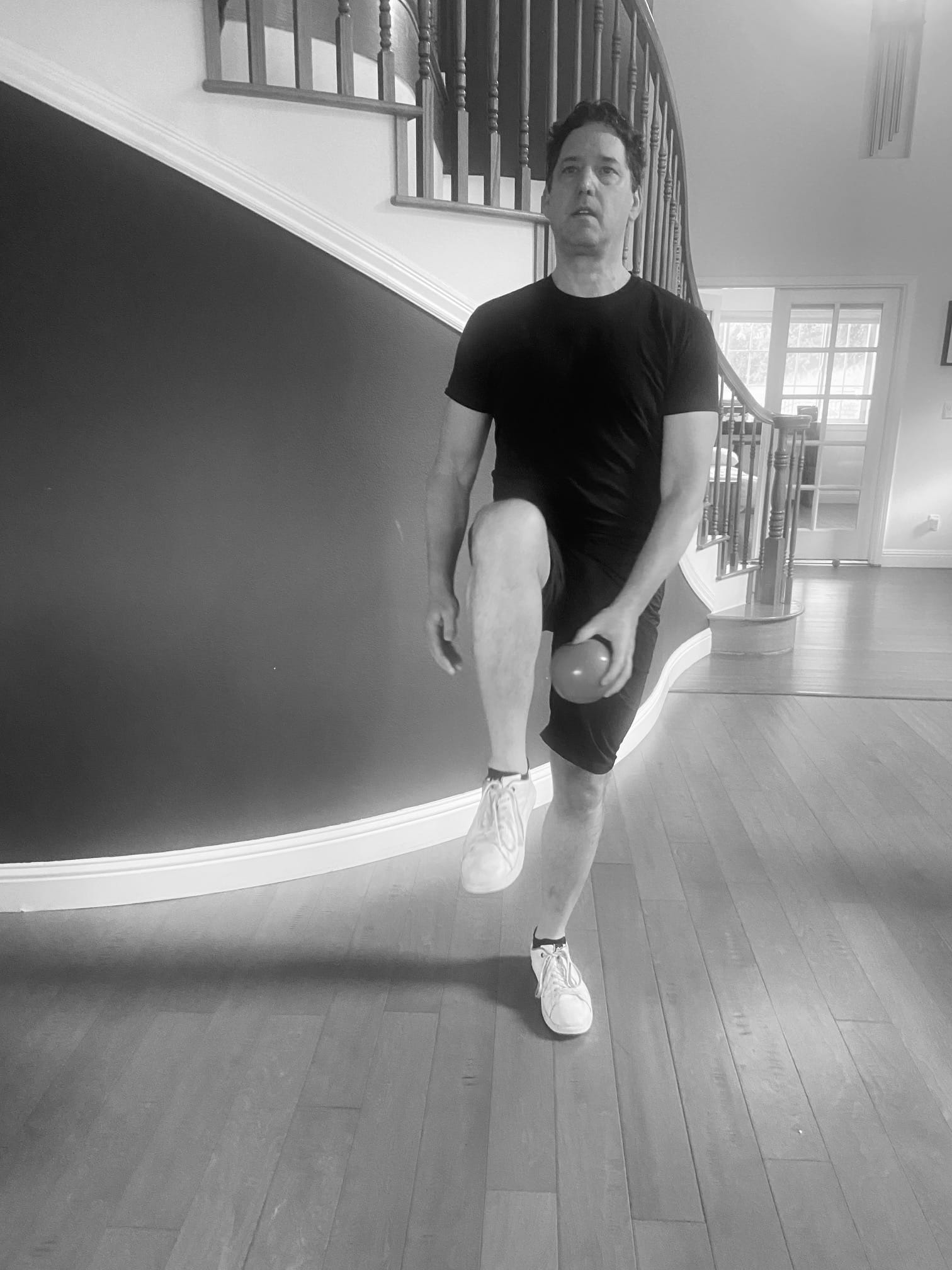
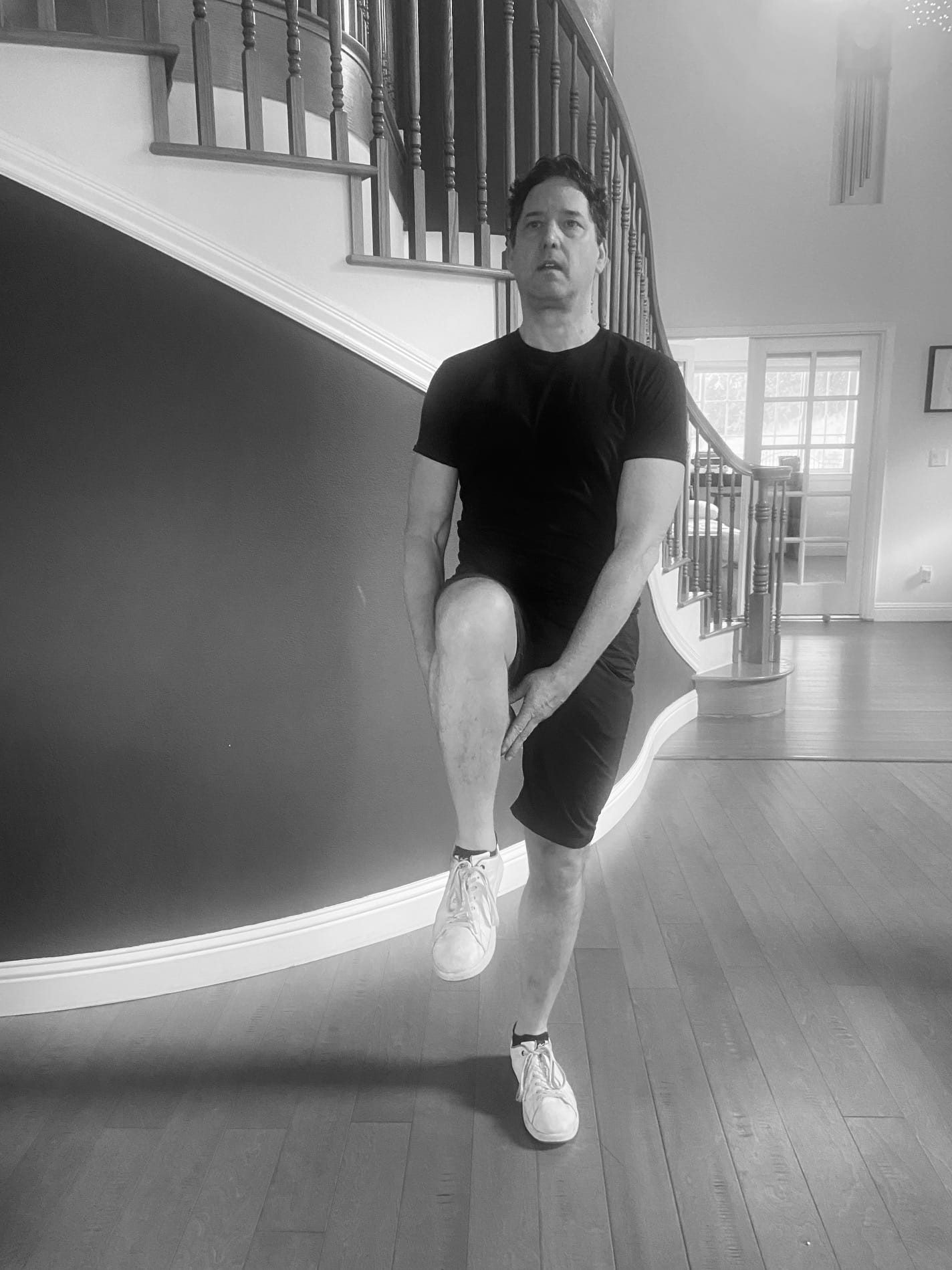
To reiterate the obvious: aging is tough. There are inevitable aches, pains, and an assortment of maladies that let you know your sandglass ain't what it used to be.
But it sure beats the alternative.
Joshua Brandt is an Oakland based personal trainer. He can be reached at joshua@joshuabrandtpt.com or (415) 412-7339.
If you enjoyed reading this article, please pass it along!
Member discussion